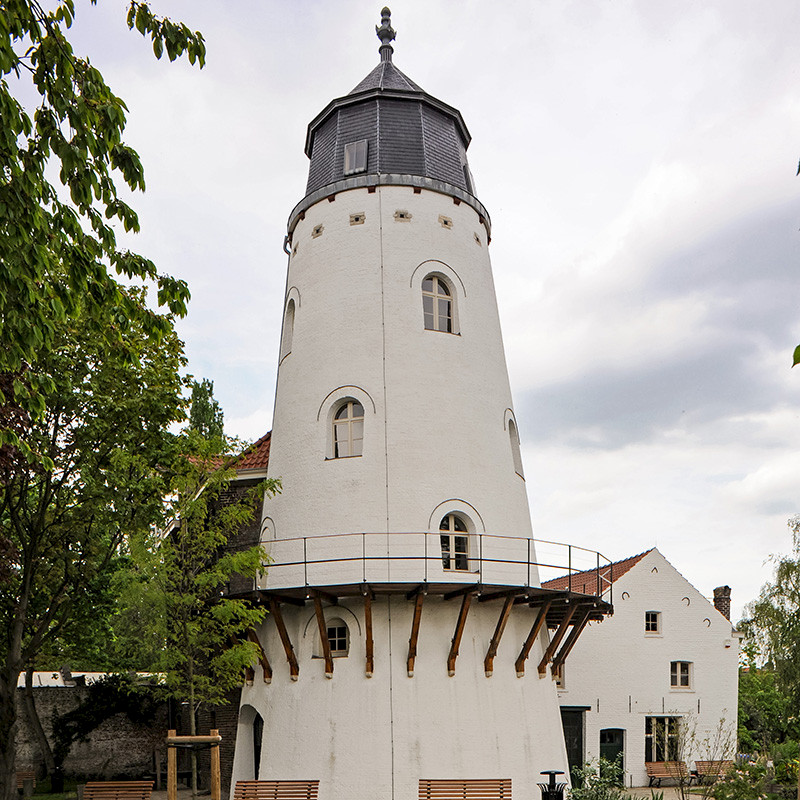Programme
visits
Brussels Museum of the Mill and Food

Built in 1841, the Evere windmill was used by local farmers to grind their grain. The building, made of brick and conical in shape, has undergone a number of changes and been put to various uses over the years. In 1853, a steam engine was installed so that the mill could continue operating regardless of the weather. This rendered the wooden sails obsolete and they were eventually taken down. The mill later acquired two new structures, in 1887 and 1904, housing roller mills and a storage space respectively. Unable to compete with the huge flour mills in Willebroek, the mill closed down in 1911 and was later used for various small-scale local industries, becoming for a time a thermosiphon factory, a tannery, a business manufacturing small woodworking machines and a factory producing casings for the butchery trade. In the 1930s, Oscar Tausig set up his spice factory there, which used the premises until 1983. Left abandoned, the mill, its garden and the paved avenue through the park were listed in 1990 and bought by the Municipality of Evere in 1998. Since 2008, the restored building is home to the Brussels Museum of the Mill and Food. The ground floor still houses milling machines used to process the spices, cleaners, roller mills and sifters – a great way to introduce visitors to the history of milling covered in the permanent exhibition, from the prehistoric grinding wheel to continuous circular motion. (Listed 20/12/1990)
For the Heritage Days, the tower mill as well as the video room showing a documentary on the history of the mill and the old machinery will be accessible to visitors. Guided tours will take in the ground floor up to the 5th floor, while other visitors will have access up to the 2nd floor.
Practical information
Sat. 10:00 to 18:00
Rue du Moulin à Vent/Windmolenstraat 21 – Evere
Reservation only for guided tours
Non accessible